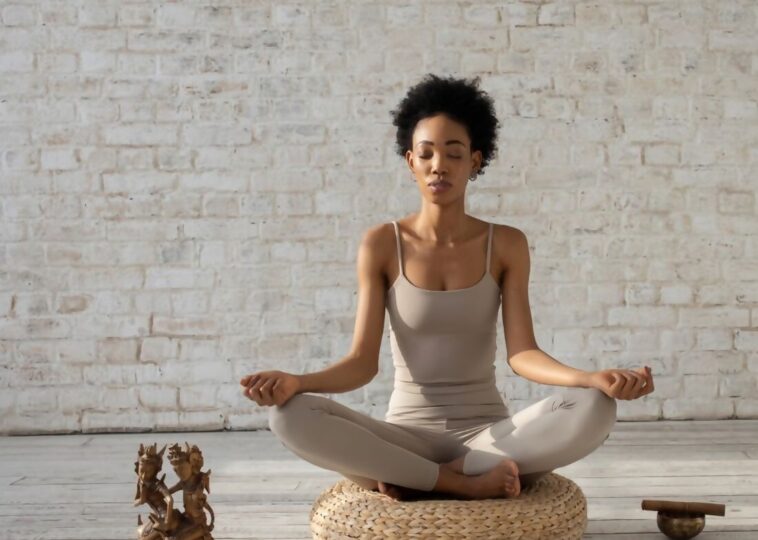Discover 8 Life-changing Mindfulness Meditation Rituals

Contents [hide]
Mindfulness in the context of psychotherapy is more than just a technique or a theoretical perspective; it’s a way of being with and relating to experience. Think of mindfulness as being present, fully engaging with the here and now, without judgment.
It’s about tuning into the subtle nuances of our thoughts, emotions, and sensations and embracing them with an open heart. The following eight practices are a great place to start if you’re unsure how to begin or are still looking for a meditation that resonates with you.
Mindful Eating

Mindful eating is not just a trendy buzzword; it’s a profound way to introduce mindfulness into our everyday lives. Think about it: what’s more ordinary than eating? This process helps you stay present, breaking the cycle of mindless eating where we often eat out of habit or distraction. What makes mindful eating so powerful is its simplicity.
By practicing mindful eating, you learn to appreciate food more deeply and recognize when you’re hungry or just eating out of boredom or stress. This awareness can lead to healthier eating habits and a more balanced relationship with food. Moreover, mindful eating encourages us to slow down.
In our fast-paced world, meals are often rushed, and we miss the joy of eating. This can also improve digestion, as eating slowly and mindfully gives our bodies time to process and absorb nutrients properly.
Breath-awareness Meditation

Have you ever noticed how your breath changes with your emotions? That’s the magic of breath-awareness meditation; it offers a direct line to the present moment through something as simple as your breath. You’ll find it incredibly sensitive to your feelings when you tune in.
Let’s dive into why this meditation is so powerful and how you can get started. Think about it: you might hold your breath when you’re scared. When you’re anxious, your breathing becomes shallow. Your breath is like a mirror reflecting your inner state. This connection is what makes focusing on the breath during meditation so insightful.
It’s not just about calming down; it’s about understanding how you relate to life. To make the most out of breath-awareness meditation, your posture is crucial. You want to aim for a relaxed, upright, and erect posture. This isn’t about being stiff. It’s about finding that sweet spot where your body supports a natural, easy flow of breath.
Body Scan Meditation

This means that instead of focusing solely on thoughts, mindfulness invites us to tune into our body’s sensations, grounding us in the present moment. Body scan meditation is a profound way to explore the intricate connection between the mind and body.
By paying close attention to our bodily sensations, moment by moment, we anchor our awareness in the physical reality of our experience. This practice is about observing sensations and understanding how our mind and body react to different stimuli. During a body scan, we often notice patterns in our responses.
For instance, when we encounter stress or discomfort, we might observe simultaneous mental judgments and physical reactions, such as muscle contraction, stiffening, and bracing. These responses are not separate events but interconnected movements involving our thoughts, emotions, and bodily sensations. This practice reveals that our conditioned reactions, be they judgments or physical tension, are part of the same process.
Mindful Movement Meditation

Mindful movement meditation is a captivating journey where each movement becomes a portal to inner peace and self-awareness. Whether it’s hatha yoga, chi gong, tai chi chuan, or even dance, these practices are more than just physical exercises; they are gateways to mindfulness. But let’s be clear: not all yoga or movement practices fit the bill for mindful movement.
In many Western yoga styles, the focus often lies on achieving specific postures or goals. This goal-oriented approach stands in stark contrast to mindful movement meditation. So, what does it mean to engage in mindful movement?
One of the most challenging yet rewarding aspects of mindful movement is maintaining this non-judgmental awareness, especially during moments that might trigger reactions. Whether it’s the beginning or end of a movement or intense sensations arising during the practice, strive to notice these experiences without attaching any judgment.
Sitting Meditation

When you think of meditation, you probably imagine a serene, Buddha-like figure sitting cross-legged with a straight back, hands resting gently in the lap, eyes closed, and a peaceful smile gracing their face. This classic image isn’t just for show; there’s profound wisdom behind it.
Let’s dive into the magic of sitting meditation and uncover how this practice can transform your life. The upright spine in sitting meditation isn’t just about looking good. You create a stable, solid foundation by sitting cross-legged with your bottom firmly grounded. Imagine your sitting posture as a clear, still container.
It’s like watching clouds drift across the sky, each unique but passing through the same space. Sitting meditation isn’t just about sitting still; it’s a systematic journey through different layers of awareness. Through sitting meditation, you cultivate a profound sense of clarity and presence.
Walking Meditation

Those triumphant moments when walking was a thrilling adventure? Over time, walking often becomes just a way to get from point A to point B. This is where walking meditation comes in, a powerful practice that brings you back to the present moment and helps you experience walking in a whole new light.
Walking meditation is like a wake-up call for your senses. It’s the antidote to sleepwalking through walking. Instead of mindlessly rushing to your next destination, you reawaken to the sensory experience of each step. It’s about immersing yourself in the act of walking, moment by moment. This is where moving meditations, such as walking meditation, can be incredibly beneficial.
They train you to stay mindful and present, even when you’re on the move. Think of walking meditation as a way to strengthen your mindfulness muscle. Just like going to the gym builds physical strength, practicing mindful walking enhances your ability to stay focused and present throughout your day.
Loving-kindness Meditation

Loving-kindness meditation, or Metta meditation, is a transformative practice that focuses on developing radical acceptance and open-heartedness. It’s about embracing each moment with an equal and unconditional positive regard, regardless of its nature. This practice is not just a feel-good exercise; it’s a powerful tool for cultivating genuine compassion and understanding.
As you immerse yourself in the meditation, you become fully absorbed in the experience of expressing these intentions. It’s not just about thinking kind thoughts; it’s about feeling them deeply. Radical acceptance is a cornerstone of loving-kindness meditation. Practically, this means that by practicing loving-kindness, you can face life’s challenges with more excellent stability and compassion.
You become better equipped to handle stress, agitation, restlessness, and obsessive self-judgment. For those who struggle with mindfulness meditation due to agitation or restlessness, loving-kindness offers a soothing alternative.
Sitting Mountain Meditation

In our fast-paced world, finding inner peace can feel like an impossible quest. Yet, a powerful practice can help you stay grounded amidst life’s inevitable turbulence: Sitting Mountain Meditation. This technique isn’t just about sitting still; it’s about transforming how you engage with the world, fostering a deep sense of serenity.
Storms, winds, and sunshine come and go, but the mountain remains steadfast. The sitting mountain meditation taps into this metaphor to help you cultivate similar inner stability. It’s about developing a profound trust in yourself and the flow of life. It’s about embracing the wisdom that everything is transient and learning to navigate change skillfully.
By visualizing yourself as a mountain, you can start to embody this spacious perspective, recognizing that you’re part of the Earth’s vast, interconnected system. By consistently practicing the sitting mountain meditation, you’ll find that you can access this imagery whenever you need to reconnect with your inner calm.


